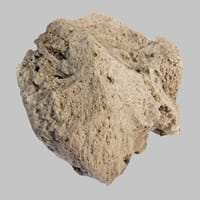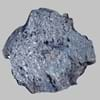Definition
Pumice is a volcanic rock that consists of highly vesicular rough textured volcanic glass, which may or may not contain crystals
It is a metamorphic magnesium rich rock because it is composed of the mineral talc
Discoverer
Unknown
Unknown
Etymology
From Old French pomis, from a Latin dialect variant of pumex
From 17th century, because of its greasy feel and use like a soap
Class
Igneous Rocks
Metamorphic Rocks
Sub-Class
Durable Rock, Medium Hardness Rock
Durable Rock, Soft Rock
Group
Volcanic
Not Applicable
Other Categories
Fine Grained Rock, Opaque Rock
Fine Grained Rock, Opaque Rock
Texture
Vesicular
Polished
Color
Beige, Colourless, Grey, Light Green, Light Grey, Pink, White, Yellow- grey
Black, Black to Grey, Green, Grey
Durability
Durable
Durable
Appearance
Vesicular
Dull, Banded and Foilated
Interior Uses
Decorative Aggregates, Flooring, Homes, Interior Decoration
Bathrooms, Decorative Aggregates, Homes, Interior Decoration
Exterior Uses
As Building Stone, As Facing Stone, Garden Decoration, Paving Stone
As Facing Stone, Garden Decoration
Other Architectural Uses
Curbing, Powder
Curbing
Construction Industry
As Dimension Stone, Cement Manufacture, for Road Aggregate, In landscaping and horticulture, Making natural cement, Production of lightweight concrete blocks
Manufacture of Magnesium and Dolomite Refractories
Medical Industry
As an abrasive in skin exfoliating products, In Chemical and Pharmaceutical Industry, Medicines and Cosmetics
Taken as a Supplement for Calcium or Magnesium
Antiquity Uses
Artifacts
Artifacts, Jewellery, Monuments, Sculpture
Commercial Uses
As a traction material on snow-covered roads, As an abrasive in pencil erasers, Fine abrasive used for polishing, Manufacture of Soap, Solvents, Dyes, Plastics and Fibres, Used in aquariums
Cemetery Markers, Creating Artwork, Gemstone, Jewelry, Manufacture of Soap, Solvents, Dyes, Plastics and Fibres, Production of Lime, Source of Magnesia (MgO)
Types
Scoria
Not Available
Features
Host Rock for Lead
Host Rock for Lead
Archaeological Significance
Monuments
Not Yet Used
Used
Famous Monuments
Not Applicable
Christ the Redeemer in Rio de Janeiro, Stonehenge in English county of Wiltshire
Sculpture
Not Yet Used
Used
Famous Sculptures
Not Applicable
Data Not Available
Figurines
Not Yet Used
Used
Formation
Pumice rock forms when the magma cools so quickly that atoms in the melt are not able to arrange themselves into a crystalline structure.
Soapstone is a talc-schist, which is a type of metamorphic rock and it is largely composed of the mineral talc and is thus rich inmagnesium.
Mineral Content
Aluminum Oxides, Calcite, Carbonate, Iron Oxides, Silica
Albite, Apatite, Biotite, Calcite, Carbonate, Clay Minerals, Hornblende, Ilmenite, Micas, Plagioclase, Pyroxene, Quartz
Compound Content
Al, Aluminium Oxide, CaO, Carbon Dioxide, MgO, Silicon Dioxide
CaO, Mg, MgO
Types of Metamorphism
Burial Metamorphism, Impact Metamorphism
Burial Metamorphism, Cataclastic Metamorphism, Contact Metamorphism, Hydrothermal Metamorphism, Impact Metamorphism, Regional Metamorphism
Types of Weathering
Biological Weathering, Chemical Weathering, Mechanical Weathering
Not Applicable
Types of Erosion
Chemical Erosion, Coastal Erosion, Glacier Erosion, Sea Erosion, Water Erosion, Wind Erosion
Not Applicable
Grain Size
Fine Grained
Fine Grained
Fracture
Planar
Conchoidal
Streak
White, Greenish White or Grey
Black
Porosity
Highly Porous
Less Porous
Specific Gravity
2.86
2.86
Transparency
Opaque
Opaque
Density
0.25-0.3 g/cm3
2.8-2.9 g/cm3
Resistance
Impact Resistant, Pressure Resistant
Heat Resistant, Pressure Resistant
Deposits in Eastern Continents
Asia
Afghanistan, Indonesia, Japan, Russia
China, India, Indonesia, Japan, North Korea, Russia, Saudi Arabia, Singapore, South Korea, Sri Lanka, Tajikistan, Thailand
Africa
Ethiopia, Kenya, Tanzania
Egypt, Ethiopia, Ghana, South Africa, Western Africa
Europe
Greece, Hungary, Iceland, Italy, Turkey
Austria, England, Finland, France, Germany, Greece, Spain, Sweden, Switzerland, United Kingdom
Others
Not Yet Found
Not Yet Found
Deposits in Western Continents
North America
Bahamas, Barbados, Canada, Costa Rica, Cuba, Jamaica, Mexico, USA
Canada, USA
South America
Argentina, Chile, Ecuador, Peru
Colombia
Deposits in Oceania Continent
Australia
New Zealand, Western Australia
Central Australia, New Zealand, Queensland
All about Pumice and Soapstone Properties
Know all about Pumice and Soapstone properties here. All properties of rocks are important as they define the type of rock and its application. Pumice belongs to Igneous Rocks while Soapstone belongs to Metamorphic Rocks.Texture of Pumice is Vesicular whereas that of Soapstone is Polished. Pumice appears Vesicular and Soapstone appears Dull, Banded and Foilated. The luster of Pumice is earthy while that of Soapstone is greasy. Pumice is available in beige, colourless, grey, light green, light grey, pink, white, yellow- grey colors whereas Soapstone is available in black, black to grey, green, grey colors. The commercial uses of Pumice are as a traction material on snow-covered roads, as an abrasive in pencil erasers, fine abrasive used for polishing, manufacture of soap, solvents, dyes, plastics and fibres, used in aquariums and that of Soapstone are cemetery markers, creating artwork, gemstone, jewelry, manufacture of soap, solvents, dyes, plastics and fibres, production of lime, source of magnesia (mgo).









